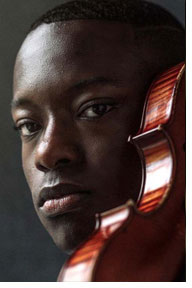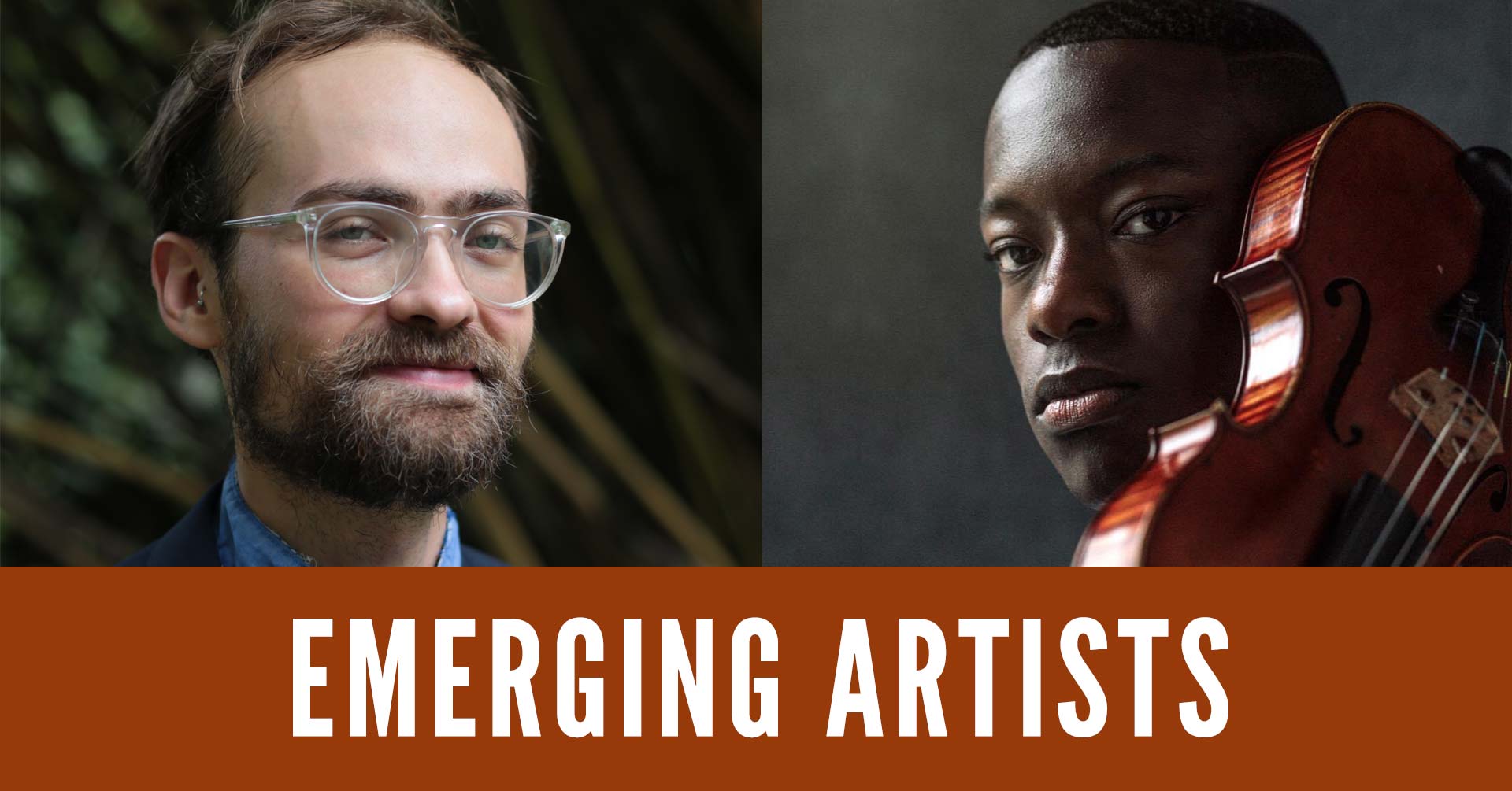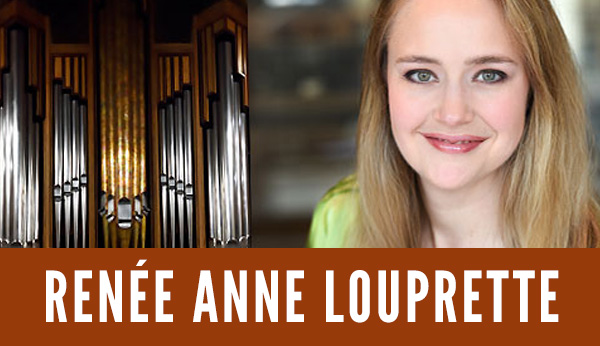2021 EMERGING ARTISTS
Wednesday, June 9 | noon
First United Methodist Church
407 N. Bridge Street
DUO-B / HIRONO BORTER
Muse, from Reimagining Bach
John Uzodinma, violin
Holden Bitner, cello
NADIA BOULANGER (1887-1979)
Modéré, from Trois Pièces
Holden Bitner, cello
Faith DeBow, piano
WILLIAM GRANT STILL (1895-1978)
Mother and Child, from Suite for Violin and Piano
John Uzodinma, violin
Faith DeBow, piano
CAROLINE SHAW (b. 1982)
In manus tuas
Holden Bitner,cello
JENNIFER HIGDON (b. 1962)
Pale Yellow, from Piano Trio
John Uzodinma, violin
Holden Bitner, cello
Faith DeBow, piano
MAURICE RAVEL (1875-1937)
Tzigane
John Uzodinma, violin
Faith DeBow, piano
ANDRE PREVIN (1929-2019)
Vocalise
John Uzodinma, violin
Holden Bitner, cello
Faith DeBow, piano
Sponsors
Dodie Griffin
John Griffin & Lynn Knaupp
This concert is generously supported by our concert sponsors and by donors to the Victoria Bach Festival’s Annual Fund. Many thanks to our generous supporters!
About the Artists

Holden Delvalle Bitner (he/him) grew up in Nashville, Tennessee where as a young person he played cello and bass in all sorts of groups – from rock and funk bands to jazz big bands and combos. Holden fell in love with classical music in his early 20’s, and has been pursuing it passionately ever since. He earned a M.M. in cello performance in 2019 from FSU where he studied with Greg Sauer. He also holds an undergraduate degree from the University of Tennessee Chattanooga, where he double majored in International Studies and Spanish.
Holden has been with the Tallahassee Symphony Orchestra since 2018. He is also the assistant principal cellist of the Northwest Florida Symphony Orchestra, and has played with the Richmond Symphony, the Ocala Symphony, Sinfonia Gulf Coast, Northwest Florida Ballet, Sewanee Summer Festival Symphony, and many other orchestras and ensembles. Holden loves performing orchestral repertoire, chamber music and pretty much anything else you can think of – some of his favorite memories with the TSO are the young people’s concerts. These days, when he is not playing music, you can usually find him outside in his garden, or on the saddle of a bicycle.

John Eze Uzodinma II was born in Madison, Mississippi, and is the oldest son of Eze and Cynthia Uzodinma. John began studying the violin at the age of 8. His passion for music has driven him to attend numerous summer music festivals and to compete in competitions ranging in location from British Columbia, Canada, to Sydney, Australia. Upon graduation from high school, he was named the National Gold Medal Winner of the 2013 NAACP ACT-SO Competition and 2013 Omega Psi Phi Fraternity, Inc. 7th District Talent Hunt. John performed at the 2013 Medgar Evers 50th Anniversary Celebration at Arlington National Cemetery in Washington, D.C. with former President Bill Clinton in attendance.
Uzodinma obtained his Bachelor of Music in Violin Performance with Highest Honors from the University of Southern Mississippi’s School of Music in May of 2017. While at USM, John was the 2016 award recipient of The Presser Foundation’s Undergraduate Scholar Award, the Kennard-Washington Distinguished Man of the Year award, and the 2016 Afro-American Student Organization’s Outstanding Leadership Award. He furthered his musical studies by pursuing a Master of Music at Louisiana State University’s School of Music, where he led the symphony orchestra as concertmaster during its 2017 to 2019 concert season. John is currently pursuing his Doctorate of Musical Arts degree at the University of Southern Mississippi.
Emerging Artists
The Emerging Artists program (formerly the New Young Artists program) began in 1992 and has featured over sixty of the nation’s most promising young musicians. During Festival week, the Emerging Artists perform a formal recital and a series of outreach concerts at the public library, assisted living centers, and children’s summer camps.

Faith DeBow has served as collaborative pianist and Emerging Artist Coordinator on the leadership team of the Victoria Bach Festival since 2010. Faith is sought after for both solo and collaborative performances as well as choral accompaniment and teaching. She enjoys a vibrant career based in the Central Texas region. Her playing has been heard in outer space at the International Space Station, performing Christmas music on video for astronauts working there during the holiday season.
Ms. DeBow has performed with opera singer Renée Fleming; conductors Peter Bay, Anton Coppola, Craig Hella Johnson, and Sebastian Lang-Lessing; and has performed the works of composers Jake Heggie, Libby Larsen, Roberto Sierra, and Michael Schelle. She has also premiered works by Donald Grantham, Cary Ratcliff, Jake Runestad, and John Muehleisen. In 2012, Ms. DeBow commissioned and premiered Brilliant Sky, a solo piano work by Colin Sorgi. She has served as rehearsal pianist in premieres composed by Stephen Paulus, Kevin Puts, Nico Muhly, Tarik O’Regan, Dan Welcher, Eric Banks, and Robert Kyr.
Faith maintains a longstanding collaboration with the Grammy®-winning choral ensemble Conspirare. Ms. DeBow has performed with the choir in Texas cities such as San Antonio, Houston, Dallas, Fredericksburg, Round Top, and its home base of Austin. Outside the state, she toured the greater US: New York City, San Francisco, Omaha, Oklahoma City, and Goshen (Indiana); internationally, Copenhagen, Paris, and Saint-Lo (France).
Ms. DeBow also regularly performs with Musica Viva’s Susan Doering (violin), and Dieter Wulfhorst (cello) across California’s Central Valley.
In 2010, she traveled to Reykjavik to collaborate with Tim Buzbee, Principal Tuba of the Iceland Symphony Orchestra. DeBow and Buzbee gave a recital at the Hallgrimskirkja national cathedral and recorded a CD for Albany Records, Angels and Demons.
Her performances have been broadcast on PBS, NPR’s Performance Today, Georgia Public Radio, KPAC San Antonio, KMFA Austin, and Victoria Public Radio. Ms. DeBow appeared in Conspirare’s one-hour television special for PBS broadcast nationally in March 2009; the CD of that concert, A Company of Voices: Conspirare in Concert, was nominated for a 2010 Grammy® Award for “Best Classical Crossover Album.”
Faith DeBow has also recorded for Harmonia Mundi with Conspirare (Pablo Neruda: The Poet Sings, 2015 and Samuel Barber: An American Romantic, 2012) and for Albany Records with tuba player Tim Buzbee (Angels and Demons, 2012, featuring Sonata del Angel Caido by Ferrer Ferran; Apocalyptic Voices by James Meador; and Three Miniatures for Tuba and Piano by Anthony Plog).
She teaches class piano and collaborative piano as a Senior Lecturer at Texas State University, a position she has held since 2001. She also accompanies instrumental students at Trinity University and is the pianist for the boy choir at the historic San Antonio Academy. Ms. DeBow often plays orchestral keyboard with the Austin Symphony Orchestra.
Program Notes
The ensemble Duo-B began in 2009 with the chance meeting of Japanese violinist Hirono Sugimoto and American cellist Philip Borter at the Hochschule für Musik in Freiburg, Germany. They formed Duo-B in graduate school at the Eastman School of Music. The Borters and their four children now reside in Waco, TX.
Duo-B explores music from a variety of genres and cultures, including folk traditions of Europe, Japan, and South America. As an alternative classical ensemble, Duo-B is invested in creating music that enhances, diversifies, and re-invigorates the modern concert experience. Hirono writes original compositions for the ensemble and they work together to create new arrangements of music from a variety of eras and genres. The composer explains: “Muse I is a meditation on the prelude from the Suite in E-flat Major for solo cello. The cellist’s part, with its thickly arpeggiated landscape, is unmodified from Bach’s original work while the violin melody provides a lyrical counterpart. However, rather than acting against the disjunct cello line, I envisioned a muse coyly coaxing and inspiring the cellist to not get lost in the perpetual nature of the work.”
Nadia Boulanger was a legendary piano and composition teacher whose students included Aaron Copland, Astor Piazzolla, Philip Glass, and Elliot Carter. In a 1962 tribute in The New York Times, composer Virgil Thomson joked that she was a “one-woman graduate school so powerful and so permeating that legend credits every American town with two things—a five-and-dime and a Boulanger pupil.” She herself gave up composition in the 1920s in favor of teaching and conducting. She originally wrote her Trois Pièces for organ in 1911 and transcribed them for cello and piano in 1914. The “Modéré” movement that opens the work is delicate and dreamy, with a beautiful cello melody that floats over the piano accompaniment and builds in tension as it rises into the instrument’s upper register.
William Grant Still wrote almost two hundred works including eight operas, five symphonies, choral works, and a ballet. He earned multiple honorary doctorates and numerous commissions over the course of his career, and was the first Black composer to lead a professional symphony orchestra in the United States, all hard-won accomplishments considering the complex racial and cultural politics of his time. In 1955, he reflected “It has been equally a pleasure and a challenge to be colored and to be composing serious music in the United States: a pleasure, because it is exciting to be competing in a new field; a challenge, because there are always problems to be met and conquered.”
Still wrote the three-movement Suite for Violin and Piano in 1943. Inspired by Sargent Johnson’s lithograph entitled “Mother and Child,” Still explained “…when I was asked to compose a suite for violin and piano, I thought of three contemporary Negro artists whom I admire and resolve [sic] to try to catch in music my feeling for an outstanding work by each of them.” Mother and Child evoked powerful feelings, and as the work grew in popularity, Still quickly made several arrangements, including one for string orchestra. Judith Anne Still, the composer’s daughter, noted that of all his works, the brief Mother and Child movement was one of her father’s favorite compositions and was “surely most people’s favorite—people call regularly to say how beautiful it is.”
When speaking of his own mother in interviews, Still described her love as a mix of encouragement and discipline: “I rarely missed passing through a day without a licking. But I needed them.” Mother and Child reflects these contrasting aspects of Still’s memories of his mother, and the complexity of maternal love. Composed in a loose ABA form with hints of a lullaby, Still’s music transitions between major and minor, syncopation and straightforward rhythms, providing both tension and maternal comfort.
American composer, singer, and violinist Caroline Shaw was awarded the Pultizer Prize in Music in 2013 for her a capella work Partita for 8 Voices. Of In manus tuas, she wrote:
“In manus tuas is based on a 16th century motet by Thomas Tallis. While there are only a few slices of the piece that reflect exact harmonic changes in Tallis’ setting, the motion (or lack of) is intended to capture the sensation of a single moment of hearing the motet in the particular and remarkable space of Christ Church in New Haven, Connecticut. In manus tuas was written in 2009 for cellist Hannah Collins, for a secular solo cello compline service held in the dark, candlelit nave.”
Jennifer Higdon is one of America’s most acclaimed and most frequently performed living composers. She received the 2010 Pulitzer Prize in Music for her Violin Concerto, a 2010 Grammy for her Percussion Concerto, a 2018 Grammy for her Viola Concerto, and a 2020 Grammy for her Harp Concerto. Higdon reflected on the relationship of music and color in her Piano Trio:
“Can music reflect colors, and can colors be reflected in music? I have always been fascinated with the connection between painting and music. In my composing, I often picture colors as if I were spreading them on a canvas, except I do so with melodies, harmonies and through the instruments themselves. The colors that I have chosen in both of the movement titles and in the music itself, reflect very different moods and energy levels, which I find fascinating, as it begs the question, can colors actually convey a mood?”
Hungarian violinist Jelly d’Arányi’s performance of Béla Bartók’s First Violin Sonata with the composer at the piano made a strong impression on Maurice Ravel. Following the concert, Ravel pressed d’Arányi to play “gypsy” pieces from her homeland for him. She obliged, and kept playing well past 4 am. Ravel was inspired by the encounter, and wrote his virtuoso classic, Tzigane (Gypsy), for d’Arányi. She premiered it in London in April 1924, just a few days after the composer finished it. The piece is full of challenges for the violinist, including a long opening solo that leads into some bowing pyrotechnics.
Andre Previn began his music career orchestrating film scores in Hollywood, where he was expected to conduct his compositions for recordings. His skill as a conductor eventually led to a prestigious international career, including posts as Music Director of the London Symphony Orchestra, Los Angeles Philharmonic, and Pittsburgh Symphony Orchestra. Previn also recorded and toured extensively as a jazz pianist. He composed his Vocalise for Soprano, Piano, and Cello in a single July day in 1995 at the Tanglewood Music Festival and recorded it with Sylvia McNair and Yo-Yo Ma the following morning. John Uzodinma picks up the soprano line on his violin in this performance.
The ensemble Duo-B began in 2009 with the chance meeting of Japanese violinist Hirono Sugimoto and American cellist Philip Borter at the Hochschule für Musik in Freiburg, Germany. They formed Duo-B in graduate school at the Eastman School of Music. The Borters and their four children now reside in Waco, TX.
Duo-B explores music from a variety of genres and cultures, including folk traditions of Europe, Japan, and South America. As an alternative classical ensemble, Duo-B is invested in creating music that enhances, diversifies, and re-invigorates the modern concert experience. Hirono writes original compositions for the ensemble and they work together to create new arrangements of music from a variety of eras and genres. The composer explains: “Muse I is a meditation on the prelude from the Suite in E-flat Major for solo cello. The cellist’s part, with its thickly arpeggiated landscape, is unmodified from Bach’s original work while the violin melody provides a lyrical counterpart. However, rather than acting against the disjunct cello line, I envisioned a muse coyly coaxing and inspiring the cellist to not get lost in the perpetual nature of the work.”
Nadia Boulanger was a legendary piano and composition teacher whose students included Aaron Copland, Astor Piazzolla, Philip Glass, and Elliot Carter. In a 1962 tribute in The New York Times, composer Virgil Thomson joked that she was a “one-woman graduate school so powerful and so permeating that legend credits every American town with two things—a five-and-dime and a Boulanger pupil.” She herself gave up composition in the 1920s in favor of teaching and conducting. She originally wrote her Trois Pièces for organ in 1911 and transcribed them for cello and piano in 1914. The “Modéré” movement that opens the work is delicate and dreamy, with a beautiful cello melody that floats over the piano accompaniment and builds in tension as it rises into the instrument’s upper register.
William Grant Still wrote almost two hundred works including eight operas, five symphonies, choral works, and a ballet. He earned multiple honorary doctorates and numerous commissions over the course of his career, and was the first Black composer to lead a professional symphony orchestra in the United States, all hard-won accomplishments considering the complex racial and cultural politics of his time. In 1955, he reflected “It has been equally a pleasure and a challenge to be colored and to be composing serious music in the United States: a pleasure, because it is exciting to be competing in a new field; a challenge, because there are always problems to be met and conquered.”
Still wrote the three-movement Suite for Violin and Piano in 1943. Inspired by Sargent Johnson’s lithograph entitled “Mother and Child,” Still explained “…when I was asked to compose a suite for violin and piano, I thought of three contemporary Negro artists whom I admire and resolve [sic] to try to catch in music my feeling for an outstanding work by each of them.” Mother and Child evoked powerful feelings, and as the work grew in popularity, Still quickly made several arrangements, including one for string orchestra. Judith Anne Still, the composer’s daughter, noted that of all his works, the brief Mother and Child movement was one of her father’s favorite compositions and was “surely most people’s favorite—people call regularly to say how beautiful it is.”
When speaking of his own mother in interviews, Still described her love as a mix of encouragement and discipline: “I rarely missed passing through a day without a licking. But I needed them.” Mother and Child reflects these contrasting aspects of Still’s memories of his mother, and the complexity of maternal love. Composed in a loose ABA form with hints of a lullaby, Still’s music transitions between major and minor, syncopation and straightforward rhythms, providing both tension and maternal comfort.
American composer, singer, and violinist Caroline Shaw was awarded the Pultizer Prize in Music in 2013 for her a capella work Partita for 8 Voices. Of In manus tuas, she wrote:
“In manus tuas is based on a 16th century motet by Thomas Tallis. While there are only a few slices of the piece that reflect exact harmonic changes in Tallis’ setting, the motion (or lack of) is intended to capture the sensation of a single moment of hearing the motet in the particular and remarkable space of Christ Church in New Haven, Connecticut. In manus tuas was written in 2009 for cellist Hannah Collins, for a secular solo cello compline service held in the dark, candlelit nave.”
Jennifer Higdon is one of America’s most acclaimed and most frequently performed living composers. She received the 2010 Pulitzer Prize in Music for her Violin Concerto, a 2010 Grammy for her Percussion Concerto, a 2018 Grammy for her Viola Concerto, and a 2020 Grammy for her Harp Concerto. Higdon reflected on the relationship of music and color in her Piano Trio:
“Can music reflect colors, and can colors be reflected in music? I have always been fascinated with the connection between painting and music. In my composing, I often picture colors as if I were spreading them on a canvas, except I do so with melodies, harmonies and through the instruments themselves. The colors that I have chosen in both of the movement titles and in the music itself, reflect very different moods and energy levels, which I find fascinating, as it begs the question, can colors actually convey a mood?”
Hungarian violinist Jelly d’Arányi’s performance of Béla Bartók’s First Violin Sonata with the composer at the piano made a strong impression on Maurice Ravel. Following the concert, Ravel pressed d’Arányi to play “gypsy” pieces from her homeland for him. She obliged, and kept playing well past 4 am. Ravel was inspired by the encounter, and wrote his virtuoso classic, Tzigane (Gypsy), for d’Arányi. She premiered it in London in April 1924, just a few days after the composer finished it. The piece is full of challenges for the violinist, including a long opening solo that leads into some bowing pyrotechnics.
Andre Previn began his music career orchestrating film scores in Hollywood, where he was expected to conduct his compositions for recordings. His skill as a conductor eventually led to a prestigious international career, including posts as Music Director of the London Symphony Orchestra, Los Angeles Philharmonic, and Pittsburgh Symphony Orchestra. Previn also recorded and toured extensively as a jazz pianist. He composed his Vocalise for Soprano, Piano, and Cello in a single July day in 1995 at the Tanglewood Music Festival and recorded it with Sylvia McNair and Yo-Yo Ma the following morning. John Uzodinma picks up the soprano line on his violin in this performance.





